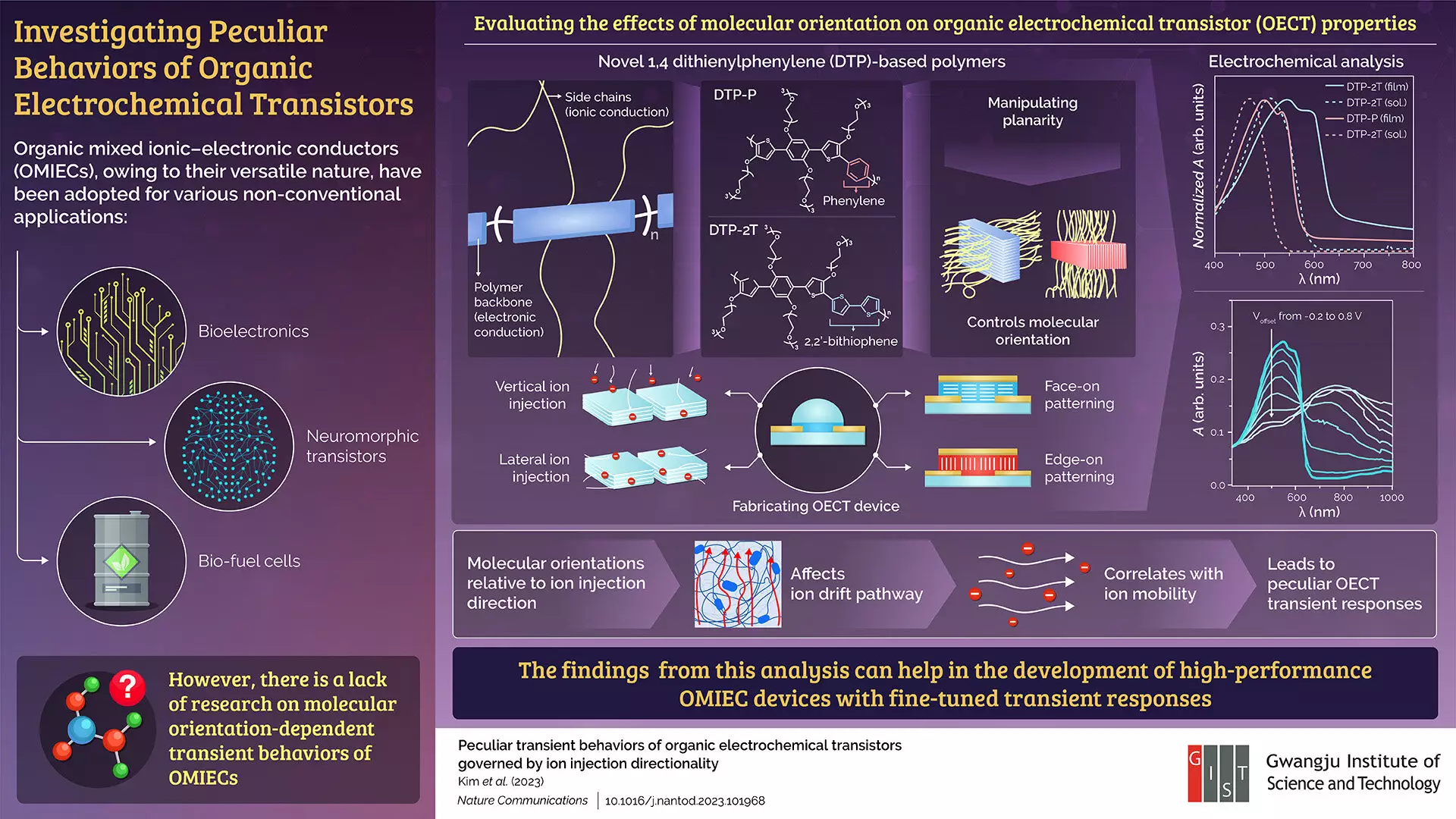Organic mixed ionic-electronic conductors (OMIECs) have become a highly sought-after class of materials for non-conventional applications such as bioelectronics, neuromorphic computing, and bio-fuel cells. These materials possess the unique combination of electronic and ionic conduction properties, making them ideal for a wide range of emerging technologies. However, in order to fully realize the potential of OMIECs, there is a need to diversify their properties and develop techniques for tailoring their features to specific applications.
One crucial aspect of this process is the development of strategies for evaluating the various properties of OMIECs. Despite the increasing popularity of these materials, there is a severe lack of research on the molecular orientation-dependent transient behaviors of OMIECs. This gap in our understanding hinders progress in the field and limits the ability to optimize the performance of OMIEC-based devices.
An international team of researchers from Korea and the U.K., led by Professor Myung-Han Yoon from the School of Materials Science and Engineering at Gwangju Institute of Science and Technology, set out to bridge this gap in our understanding of organic mixed ionic-electronic conductors. Their recent study, published in Nature Communications on November 28, 2023, explores the peculiar transient behaviors of OMIECs governed by variations in molecular orientation using an organic electrochemical transistor (OECT).
Previous studies have already investigated OMIECs using the OECT platform, but they often overlook the correlation between backbone planarity-dependent molecular orientation and transient OECT characteristics. The team of researchers decided to focus on this aspect in order to provide a unique perspective into the world of molecular orientation-dependent characteristics of OECT devices.
To conduct their study, the researchers synthesized two new 1,4-dithienylphenylene (DTP)-based OMIECs: DTP-2T and DTP-P. These polymers had the same ionic and electronic properties but differed in molecular orientation due to differences in the polymer backbone planarity. The researchers then fabricated OECT devices using the DTP polymer and subjected them to electrochemical analysis.
The initial findings of the study revealed that both polymers showed similar electrochemical properties despite having different molecular orientations. However, when the researchers changed the ion injection direction relative to the molecular orientation at a certain current/voltage, they observed that it affected the length of the ion drift pathway. This indirect correlation with ion mobility within the polymers resulted in peculiar transient responses in the OECT devices.
These findings have significant implications for the development of OECT-based spiking neural networks (SNNs) and their potential to replace current computing systems. By gaining a deeper understanding of the molecular orientation-dependent characteristics of OECT devices, researchers can facilitate the realization of SNN-based computing systems in the future. Additionally, the insights from this study could also aid in the design and development of advanced organic mixed conductor materials for biomolecular and biosignal sensors.
The study led by Professor Myung-Han Yoon and his international team of researchers sheds light on the peculiar transient behaviors of organic mixed ionic-electronic conductors. By investigating the correlation between molecular orientation and transient OECT characteristics, the research provides valuable insights into the properties and potential applications of these materials. The study’s findings pave the way for further advancements in the field of OMIECs and open new doors for the development of innovative technologies in bioelectronics, neuromorphic computing, and more.


Leave a Reply